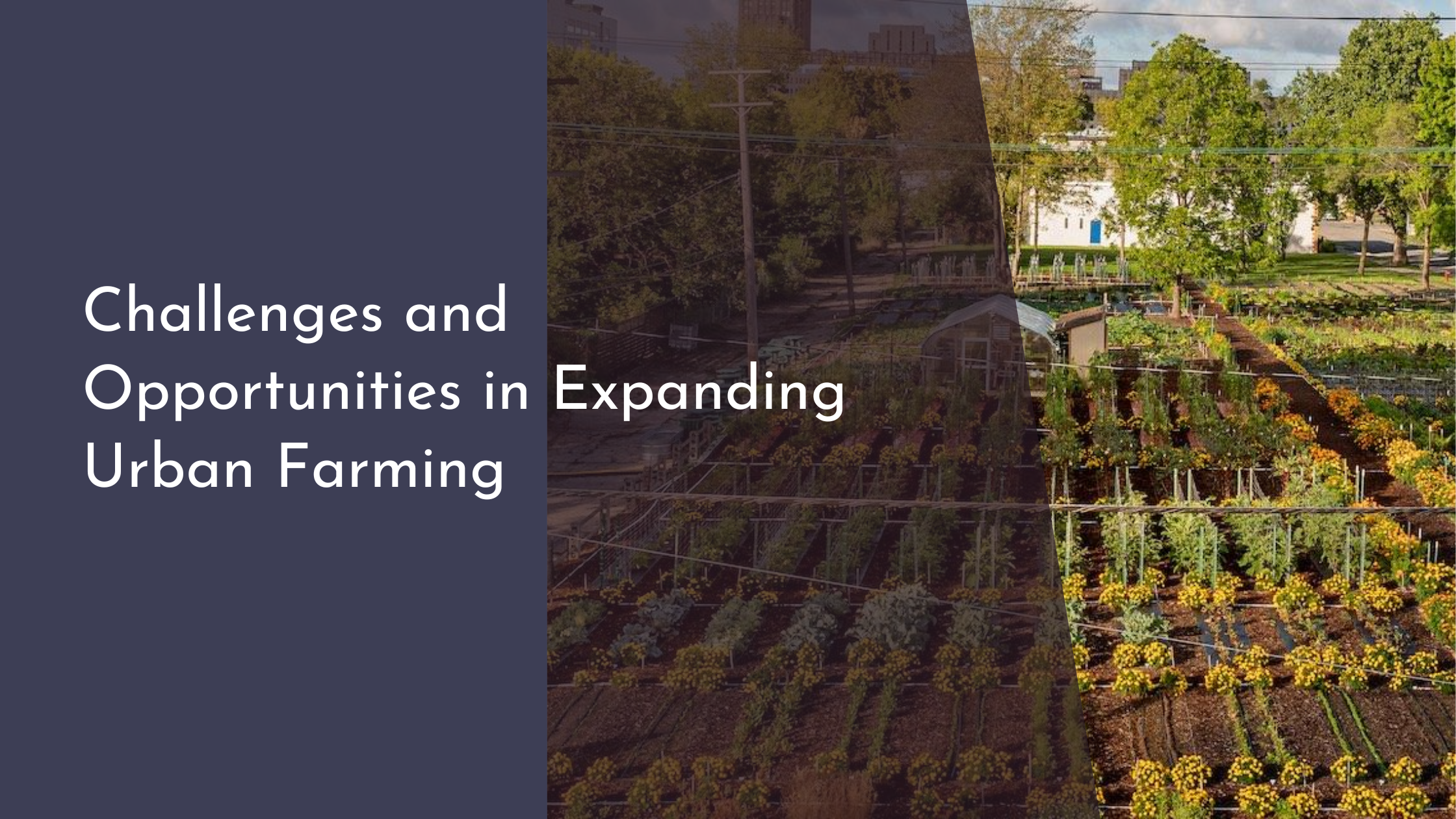Challenges and Opportunities in Expanding Urban Farming
Urban farming, once a niche movement, is now a burgeoning trend driven by the pressing need for sustainable food sources and greener urban spaces. As city populations swell, the demand for local produce has sparked interest in integrating agriculture into urban environments. This transformation not only promises fresh food but also offers cities a way to improve air quality, reduce their carbon footprint, and foster community spirit. Yet, as with any evolving field, urban farming faces its own set of challenges. These challenges, however, bring forth opportunities that could redefine how we perceive and utilize urban spaces.
Urban Farming: A Growing Necessity and Trend
The rapid urbanization across the globe has led to increased reliance on food supply chains that extend across countries and continents. This dependency poses risks associated with food security, especially in times of crisis or supply chain disruptions. Urban farming emerges as a crucial solution, providing a sustainable means to produce food locally. By integrating agriculture into the cityscape, urban farming helps mitigate these risks, ensuring that fresh, nutritious food is accessible to urban dwellers. Moreover, as climate change continues to affect traditional agriculture, urban farming presents a resilient alternative that can adapt more swiftly to changing conditions.
Beyond just necessity, urban farming is riding a wave of popularity as a trend that combines lifestyle and sustainability. Many city dwellers are becoming more conscious of the environmental impact of their food choices, opting for locally produced, organic options. Urban farms, rooftop gardens, and community plots offer a tangible connection to food production, allowing individuals and communities to partake in the growth process. This not only promotes healthier eating habits but also brings people together, fostering a sense of community and shared purpose.
Overcoming Space Constraints in Cities
One of the most significant challenges in urban farming is the limited space available in densely populated cities. With land at a premium, innovative solutions are required to repurpose available spaces for agricultural use. Vertical farming is one such solution, allowing crops to be grown in stacked layers, often using controlled-environment agriculture technology to maximize yield while minimizing the footprint. This method can turn unused urban spaces, like warehouses or vacant buildings, into productive farms, offering an efficient way to produce more food without needing more land.
Another promising approach is the utilization of rooftops and abandoned lots for farming. Rooftop gardens transform otherwise idle spaces into green oases, while also providing insulation benefits to buildings, reducing energy costs. Similarly, converting vacant lots into community gardens can revitalize neglected areas, turning them into productive, green spaces that contribute to the urban ecosystem. These strategies not only address the space constraint challenge but also enhance urban aesthetics and promote biodiversity within cities.
Technological Innovations Boosting Urban Farms
The advancement of technology plays a pivotal role in overcoming the challenges faced by urban agriculture. Hydroponics and aquaponics are technological innovations that have revolutionized the way we think about farming in urban areas. These soil-less farming techniques optimize water and nutrient usage, making them ideal for environments where resources are limited. By using recycled water and nutrients, these systems not only reduce waste but also produce higher yields compared to traditional farming methods, ensuring a continuous supply of fresh produce.
Additionally, the adoption of smart farming technologies, such as IoT sensors and data analytics, has enhanced the efficiency of urban farms. These tools allow for precise monitoring of plant health, soil conditions, and weather patterns, enabling farmers to make data-driven decisions that optimize crop growth and minimize resource use. Automation and robotics further enhance productivity by reducing labor costs and increasing the scale of operations, making urban farming economically viable on a larger scale.
Community Engagement: A Key to Success
Community engagement is vital for the success and sustainability of urban farming initiatives. By involving local residents in the planning and maintenance of urban farms, these projects gain a sense of ownership and support that is crucial for their longevity. Community gardens, in particular, offer educational opportunities, teaching people about the origins of their food, sustainable practices, and the importance of environmental stewardship. Such initiatives empower communities, fostering resilience and self-sufficiency in food production.
Moreover, urban farms can serve as hubs for social interaction and cohesion, bridging gaps between different demographic groups. By hosting workshops, events, and volunteer programs, urban farms create spaces where people can come together, share knowledge, and collaborate on projects that benefit the whole community. This communal aspect not only strengthens social bonds but also enhances the appeal and success of urban farming as a movement that is truly rooted in the community.
As urban farming continues to evolve, it presents a unique opportunity to transform how we view and utilize urban spaces. The challenges of space constraints and resource limitations are met with innovative solutions that turn these issues into opportunities for growth and sustainability. Embracing technology and fostering community engagement are crucial steps in ensuring the success of urban farming initiatives. Ultimately, as cities worldwide strive for greener, more sustainable futures, urban farming holds the potential to play a pivotal role in reshaping urban landscapes and redefining our relationship with food.

